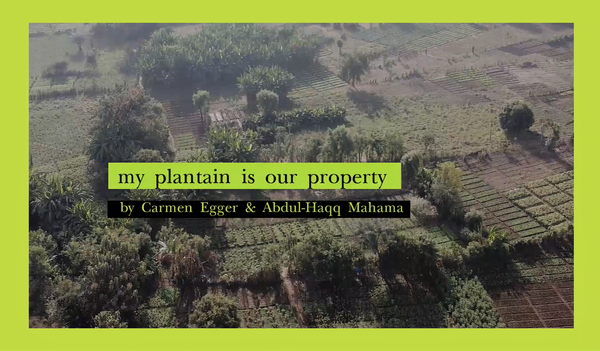Tamale Territories Interventions by [applied] Foreign Affairs Lab
Teaching and curating:
Baerbel Mueller
Juergen Strohmayer
Video editing assistance:
Oliver Rene Alunovic
In collaboration with:
Savannah Centre for Contemporary Art (SCCA) and the University of Development Studies (UDS) in Tamale, Ghana
The rapid and sprawling growth of the metropolitan area of Tamale in northern Ghana has led to the merging of the built environment with the coexistent tree savannah and agricultural landscapes. Tamale is the capital of Ghana’s Northern Region and one of the fastest-growing cities in West Africa. Tamale can be characterized by its horizontality and the presence of peripheral urban conditions embedded in the fabric of the city. In this sense, it can seem both vacant and dense. However, when looking at these open territories more carefully, one can find that the ‘vacant’ is in fact not at all vacant. Rather, this anthropocentric definition deserves questioning. Investigating Ghana’s third-largest urban center through an ecological, multi-species, non-anthropocentric lens allows for new ways of understanding urban ecologies and urban change in the predominantly agricultural setting of northern Ghana.
[applied] Foreign Affairs selected the large forest reserve adjoining the historic Tamale waterworks as an example of an inner-urban periphery in the city. In February 2021, the 160-hectare terrain was investigated in a collaborative workshop with the Savannah Centre for Contemporary Arts (SCCA), Tamale, and supported by a series of lectures by UDS, to begin researching the diverse urban ecologies of the terrain. The team of five students from Angewandte, together with five young artistic researchers from SCCA, focused on non-anthropocentric systems and ecologies through artistic and phenomenological research. This also initiated conversations with the wide range of human stakeholders present, including farmers, water vendors and drivers, marginalized groups such as drug dealers and consumers, and diverse commercial vendors present at the perimeter of the terrain. The research was guided by the topics of TERRITORIES, PERIPHERIES, ECOLOGIES, SCALES, and CRISIS. The team traced agricultural practices through interviews and drone flights; collected archival material of the colonial-era waterworks infrastructure and the dam’s catastrophic collapse; mapped the liminal spaces between the forest reserve and the surrounding neighborhoods; and observed diverse types of indigenous and cultivated vegetation and cross-species processes that shaped the landscapes of the terrain.
The research was exhibited in an on-site work-in-progress exhibition in the abandoned waterworks building. Mixed media installations were hung from the existing roof structure with minimal other interventions in the space. The intervention was easily accessible to people from the project terrain and passersby from the adjacent main road, and visited by invited guests from SCCA and UDS. From March 2021 onward, the research has been collected in five video pieces that focus on one topic each and will be set in dialogue as site-specific interventions in the exhibition Ecologies & Politics of the Living as part of the Vienna Biennale for Change 2021, end of September 2021 in Vienna.



















